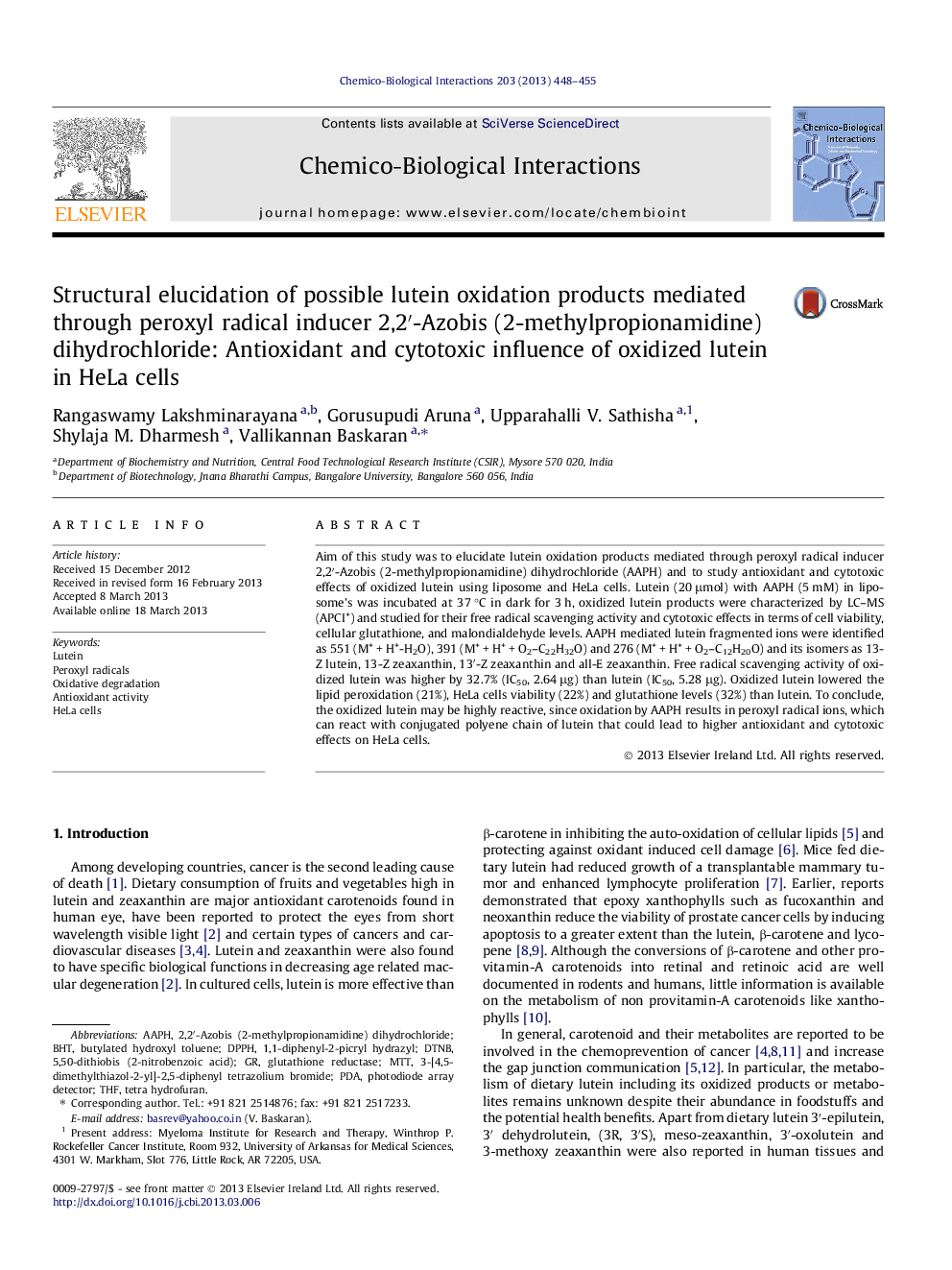| Article ID | Journal | Published Year | Pages | File Type |
|---|---|---|---|---|
| 5848227 | Chemico-Biological Interactions | 2013 | 8 Pages |
Abstract
Aim of this study was to elucidate lutein oxidation products mediated through peroxyl radical inducer 2,2â²-Azobis (2-methylpropionamidine) dihydrochloride (AAPH) and to study antioxidant and cytotoxic effects of oxidized lutein using liposome and HeLa cells. Lutein (20 μmol) with AAPH (5 mM) in liposome's was incubated at 37 °C in dark for 3 h, oxidized lutein products were characterized by LC-MS (APCI+) and studied for their free radical scavenging activity and cytotoxic effects in terms of cell viability, cellular glutathione, and malondialdehyde levels. AAPH mediated lutein fragmented ions were identified as 551 (M+ + H+-H2O), 391 (M+ + H+ + O2-C22H32O) and 276 (M+ + H+ + O2-C12H20O) and its isomers as 13-Z lutein, 13-Z zeaxanthin, 13â²-Z zeaxanthin and all-E zeaxanthin. Free radical scavenging activity of oxidized lutein was higher by 32.7% (IC50, 2.64 μg) than lutein (IC50, 5.28 μg). Oxidized lutein lowered the lipid peroxidation (21%), HeLa cells viability (22%) and glutathione levels (32%) than lutein. To conclude, the oxidized lutein may be highly reactive, since oxidation by AAPH results in peroxyl radical ions, which can react with conjugated polyene chain of lutein that could lead to higher antioxidant and cytotoxic effects on HeLa cells.
Keywords
Related Topics
Life Sciences
Environmental Science
Health, Toxicology and Mutagenesis
Authors
Rangaswamy Lakshminarayana, Gorusupudi Aruna, Upparahalli V. Sathisha, Shylaja M. Dharmesh, Vallikannan Baskaran,
